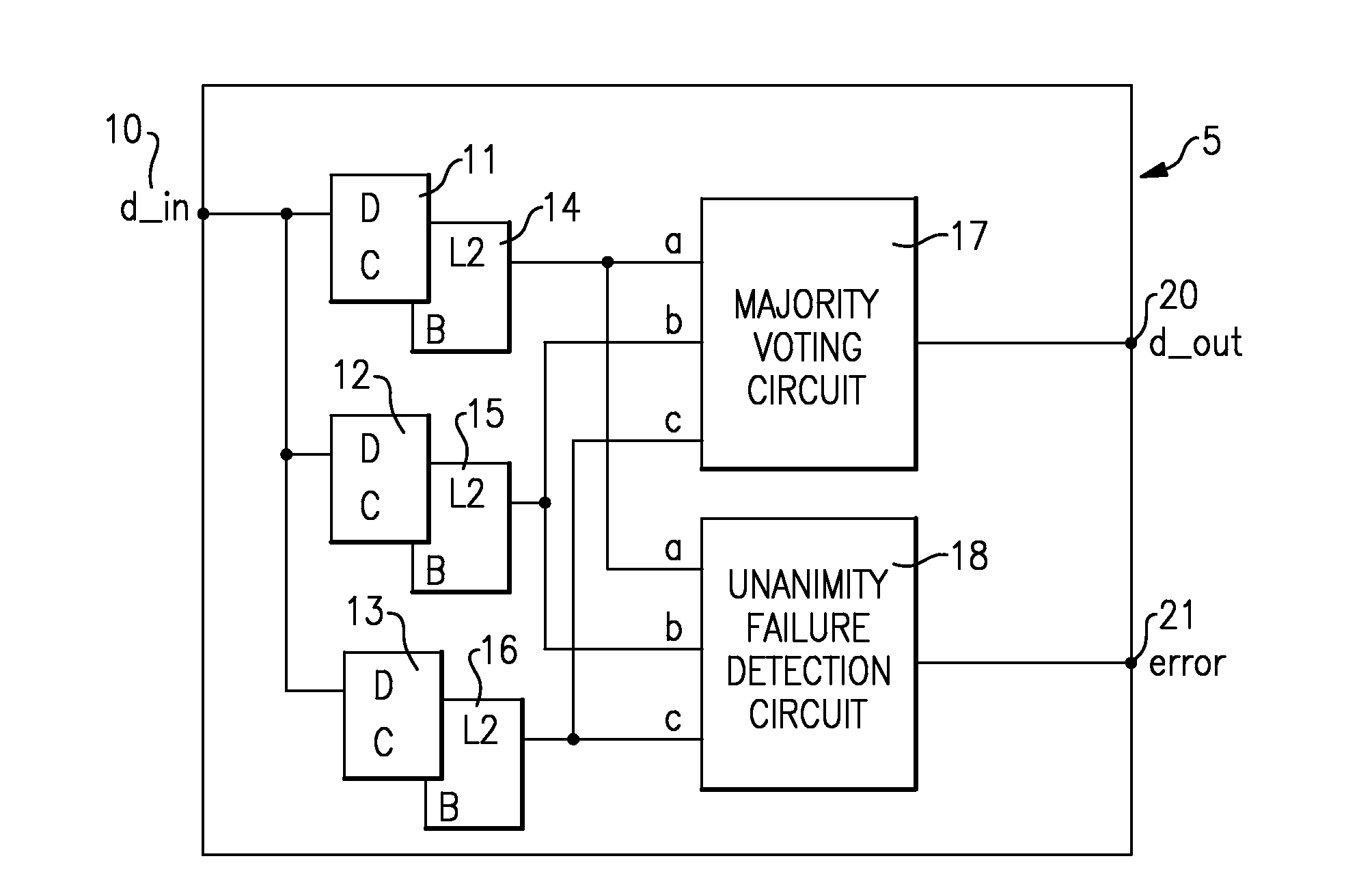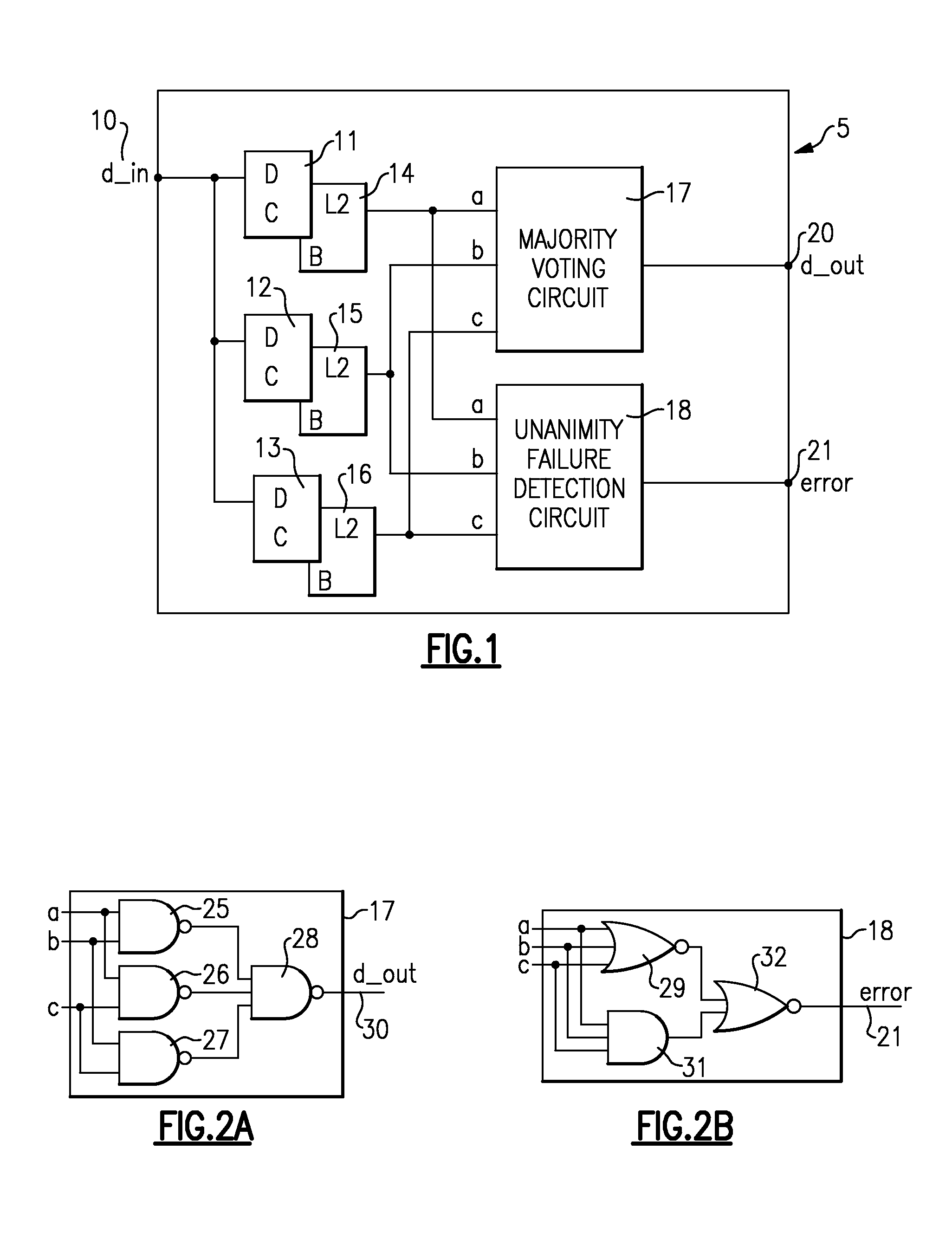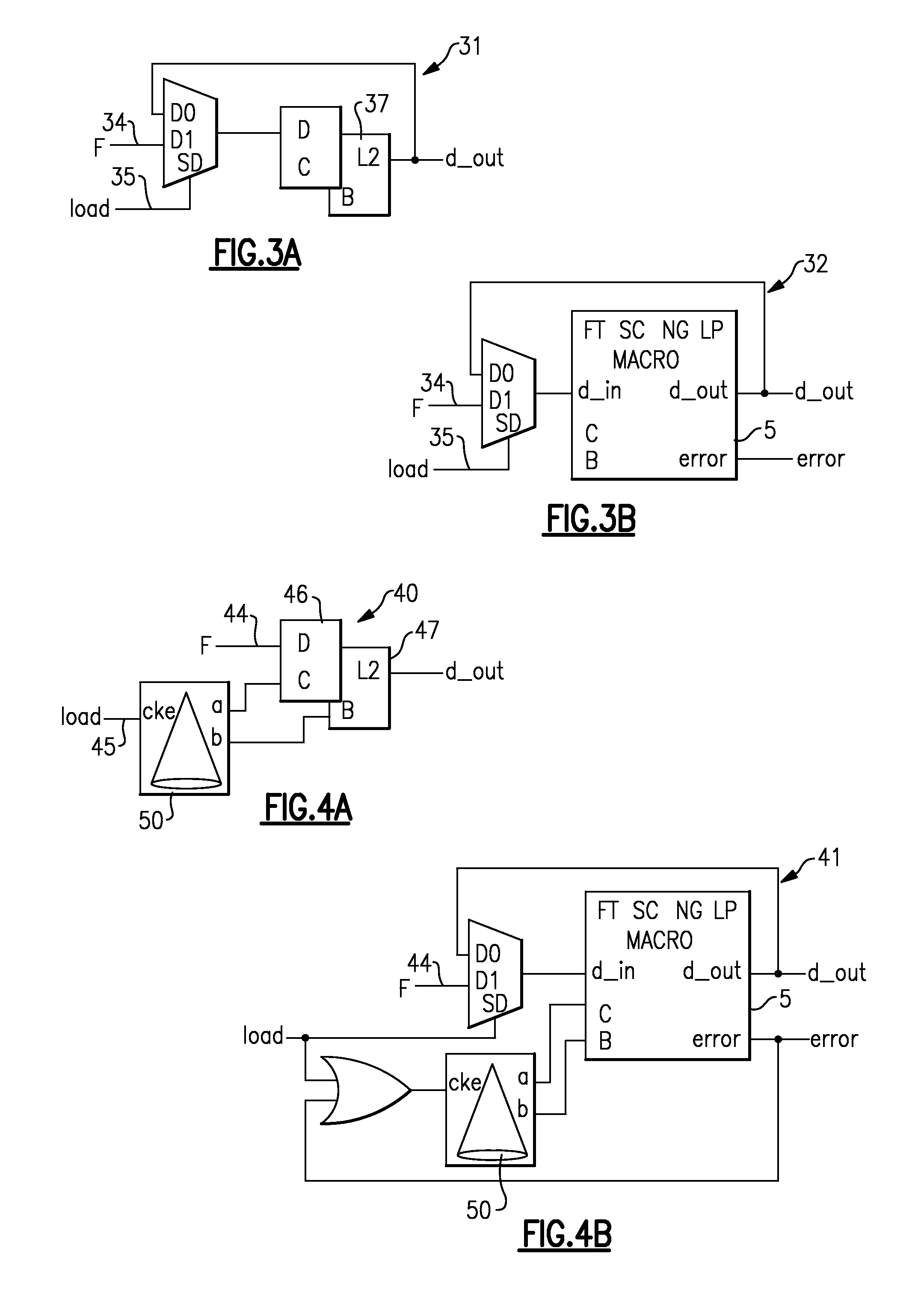Fault Tolerant Self-Correcting Non-Glitching Low Power Circuit for Static and Dynamic Data Storage
a low-power circuit and static and dynamic data technology, applied in the field of error detection, error correction, and self-healing in computer systems, can solve the problems of increasing time to market and staffing costs, and achieve the effects of reducing power and area requirements, reducing design and verification costs, and reducing power and area costs
- Summary
- Abstract
- Description
- Claims
- Application Information
AI Technical Summary
Benefits of technology
Problems solved by technology
Method used
Image
Examples
Embodiment Construction
[0029]Turning now to the drawings in greater detail, FIG. 1 illustrates a FT SC NG LP macro 5 in accordance with the present invention with a single data input d_in 10 having three latches. The latches are shown divided into their capture components (11, 12, and 13) and launch components (14, 15 and 16). They could also be represented as flip-flops, in which case the capture and launch components would be shown as a single block. Each of the latches sends a signal to the input of a majority voting circuit 17 and a unanimity failure detection circuit 18 which is described in more detail hereinafter. The output being a data output (d_out) 20 as a result of non-glitching majority vote or an error output 21 as a detection of a failure to obtain unanimity. The macro 5 is designed to handle a single soft error (single bit flip). The main points are that triplication of the data is required, that d_out 20 is the result of a non-glitching majority vote, and that error output 21 is the detec...
PUM
 Login to View More
Login to View More Abstract
Description
Claims
Application Information
 Login to View More
Login to View More - R&D
- Intellectual Property
- Life Sciences
- Materials
- Tech Scout
- Unparalleled Data Quality
- Higher Quality Content
- 60% Fewer Hallucinations
Browse by: Latest US Patents, China's latest patents, Technical Efficacy Thesaurus, Application Domain, Technology Topic, Popular Technical Reports.
© 2025 PatSnap. All rights reserved.Legal|Privacy policy|Modern Slavery Act Transparency Statement|Sitemap|About US| Contact US: help@patsnap.com



